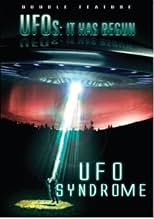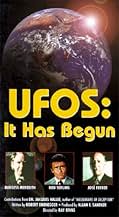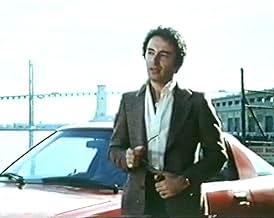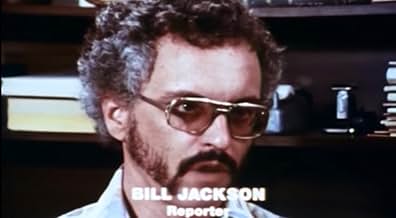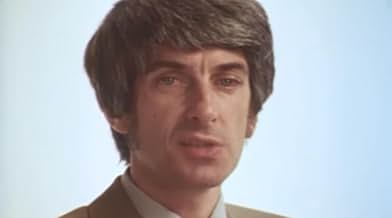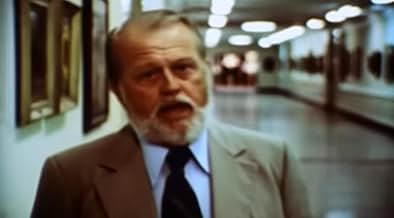A documentary exploring the existence of UFOs and extra-terrestrial beings.A documentary exploring the existence of UFOs and extra-terrestrial beings.A documentary exploring the existence of UFOs and extra-terrestrial beings.
William T. Coleman
- Self
- (as William Coleman)
Gerald Ford
- Self
- (archive footage)
Burgess Meredith
- Narrator
- (voice)
Hector Quintanilla Jr.
- Self
- (as Hector Quintanilla)
John Samford
- Self
- (archive footage)
Rod Serling
- Presenter and Narrator
- (archive footage)
- Director
- Writers
- All cast & crew
- Production, box office & more at IMDbPro
Storyline
Did you know
- TriviaThis is actually a re-release of UFOs: Past, Present, and Future, a 1974 documentary film that examines several prominent UFO sightings from the post-war to contemporary era. It was re-released in 1976 and 1979 under the title UFOs: It Has Begun to coincide with renewed interest in the subject due to the release of Steven Spielberg's Close Encounters of the Third Kind.
- ConnectionsEdited from UFOs: Past, Present, and Future (1974)
Featured review
Rod Serling introduces this hour-and-a-half examination of the UFO phenomena, with the help of various talking heads and the use of movie footage and video clips. I don't mean to disparage those contributors by calling them talking heads. They include people like Jacques Vallee and Allen Hyneck, two guys who know more about what they're talking about than anyone else -- on earth. Both, by the way, look as if they should be the poseurs that they're not. Vallee, a handsome, dapper young Frenchman was running a computer consulting business near Stanford, I think. Hyneck, with his cunning little beard, his glasses, his pipe, is a caricature of the astronomy professor that he was, at Northwestern University.
But that's all beside the point. The point is that I, at least, can't imagine how anyone who has any familiarity with the UFO business can believe anything other than that there is something out there that just can't be explained by what we now know.
I'm inclined to view the animal mutilations of the time, 1975, with skepticism and I am glad that the crop-circle craze hadn't yet become popular. But there is an extended interview with four members of an Army helicopter crew that serve as an example of a convincing experience. On a night cruise near Cleveland, the helicopter was approached at high speed by a glowing red object the size of the helicopter itself. It aligned itself with the helicopter and tracked along with it on the right side. It illuminated the copter's interior with a green light. The pilot depressed the controls to lose altitude and yet the copter was drawn up at a rate of about 1,000 feet per minute. Why would four sane and responsible Army men -- one a sergeant, the pilot a major -- put their careers and dignity in jeopardy by making up such a bizarre lie? The mystery is a real one and no film is long enough to explore it in detail, let alone a review of that film. Incredible tales from credible people are innumerable and come from around the world. I'm talking airline pilots, military personnel, police officers, the Secretary of the Navy, and one president of the United States. My own sketchy report is listed at NUFORC under Keansberg, New Jersey, 1953.
At least as interesting as UFOs themselves has been the government's response to the flood of sightings. Only a handful of dispositions is available to the authorities. (1) We don't want to panic the public, therefore all UFOs are radar inversions, hoaxes, weather balloons, or Venus, so they can be disregarded. (2) It may be foreign technology and we want to know all about it. (3) It may be REALLY foreign technology and we are helpless to cope with it, therefore we want nothing to do with it. (4) "Other," by which we mean an as-yet undiscovered state of matter, maybe akin to plasma, or perhaps an errant thought in the mind of some cosmic intelligence, of which we're only a small part.
Of course, there are in fact a lot of hoaxes out there and a lot of misidentified planets, as well as some entirely natural psychological anomalies like Barney and Betty Hill's soi-disant abductions. But this is a case for Karl Popper. Even if we were able to dismiss 99% of all sightings as drunken hallucinations, we're stuck with that left-over 1%. And all it takes is one.
Ten years ago, Donald Rumsfeld, Secretary of Defense, was ridiculed for announcing that there were known knowns, known unknowns, and unknown unknowns. I never understood why fun was being made of that typology. The existence of UFOs is clearly a known unknown. Each time an on-camera reporter cracks a joke about a sighting made by multiple responsible observers, it makes me wince -- not so much at the cavalier dismissal of a paradigmatic threat but at our own arrogance in thinking that there can no longer be anything we don't know.
The film doesn't deal with the Condon Report of 1969, which is just as well, since the volume was a travesty of science. I've spent thirty years as a sort of scientist myself and know something about how research reports work.
Anyway, I'm afraid I was carried away there for the last two or three paragraphs, due to the intensity of my interest in the subject. But I shouldn't have gotten so far away from the material under review. Can I take those paragraphs back?
But that's all beside the point. The point is that I, at least, can't imagine how anyone who has any familiarity with the UFO business can believe anything other than that there is something out there that just can't be explained by what we now know.
I'm inclined to view the animal mutilations of the time, 1975, with skepticism and I am glad that the crop-circle craze hadn't yet become popular. But there is an extended interview with four members of an Army helicopter crew that serve as an example of a convincing experience. On a night cruise near Cleveland, the helicopter was approached at high speed by a glowing red object the size of the helicopter itself. It aligned itself with the helicopter and tracked along with it on the right side. It illuminated the copter's interior with a green light. The pilot depressed the controls to lose altitude and yet the copter was drawn up at a rate of about 1,000 feet per minute. Why would four sane and responsible Army men -- one a sergeant, the pilot a major -- put their careers and dignity in jeopardy by making up such a bizarre lie? The mystery is a real one and no film is long enough to explore it in detail, let alone a review of that film. Incredible tales from credible people are innumerable and come from around the world. I'm talking airline pilots, military personnel, police officers, the Secretary of the Navy, and one president of the United States. My own sketchy report is listed at NUFORC under Keansberg, New Jersey, 1953.
At least as interesting as UFOs themselves has been the government's response to the flood of sightings. Only a handful of dispositions is available to the authorities. (1) We don't want to panic the public, therefore all UFOs are radar inversions, hoaxes, weather balloons, or Venus, so they can be disregarded. (2) It may be foreign technology and we want to know all about it. (3) It may be REALLY foreign technology and we are helpless to cope with it, therefore we want nothing to do with it. (4) "Other," by which we mean an as-yet undiscovered state of matter, maybe akin to plasma, or perhaps an errant thought in the mind of some cosmic intelligence, of which we're only a small part.
Of course, there are in fact a lot of hoaxes out there and a lot of misidentified planets, as well as some entirely natural psychological anomalies like Barney and Betty Hill's soi-disant abductions. But this is a case for Karl Popper. Even if we were able to dismiss 99% of all sightings as drunken hallucinations, we're stuck with that left-over 1%. And all it takes is one.
Ten years ago, Donald Rumsfeld, Secretary of Defense, was ridiculed for announcing that there were known knowns, known unknowns, and unknown unknowns. I never understood why fun was being made of that typology. The existence of UFOs is clearly a known unknown. Each time an on-camera reporter cracks a joke about a sighting made by multiple responsible observers, it makes me wince -- not so much at the cavalier dismissal of a paradigmatic threat but at our own arrogance in thinking that there can no longer be anything we don't know.
The film doesn't deal with the Condon Report of 1969, which is just as well, since the volume was a travesty of science. I've spent thirty years as a sort of scientist myself and know something about how research reports work.
Anyway, I'm afraid I was carried away there for the last two or three paragraphs, due to the intensity of my interest in the subject. But I shouldn't have gotten so far away from the material under review. Can I take those paragraphs back?
- rmax304823
- Nov 20, 2011
- Permalink
Details
Contribute to this page
Suggest an edit or add missing content


